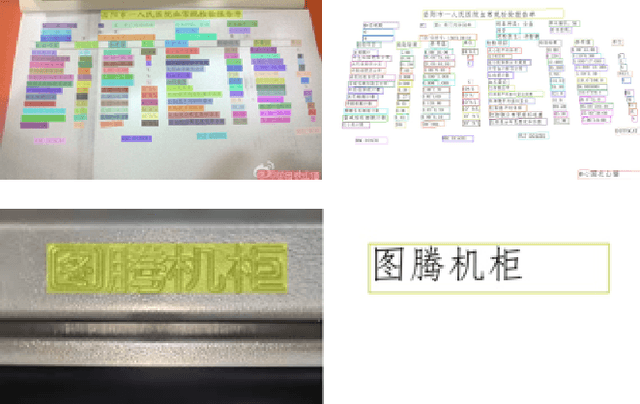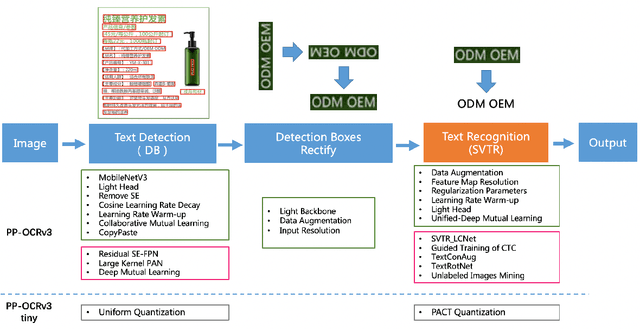Kaitao Jiang
PP-OCRv3: More Attempts for the Improvement of Ultra Lightweight OCR System
Jun 07, 2022



Abstract:Optical character recognition (OCR) technology has been widely used in various scenes, as shown in Figure 1. Designing a practical OCR system is still a meaningful but challenging task. In previous work, considering the efficiency and accuracy, we proposed a practical ultra lightweight OCR system (PP-OCR), and an optimized version PP-OCRv2. In order to further improve the performance of PP-OCRv2, a more robust OCR system PP-OCRv3 is proposed in this paper. PP-OCRv3 upgrades the text detection model and text recognition model in 9 aspects based on PP-OCRv2. For text detector, we introduce a PAN module with large receptive field named LK-PAN, a FPN module with residual attention mechanism named RSE-FPN, and DML distillation strategy. For text recognizer, the base model is replaced from CRNN to SVTR, and we introduce lightweight text recognition network SVTR LCNet, guided training of CTC by attention, data augmentation strategy TextConAug, better pre-trained model by self-supervised TextRotNet, UDML, and UIM to accelerate the model and improve the effect. Experiments on real data show that the hmean of PP-OCRv3 is 5% higher than PP-OCRv2 under comparable inference speed. All the above mentioned models are open-sourced and the code is available in the GitHub repository PaddleOCR which is powered by PaddlePaddle.
Anomaly Detection via Self-organizing Map
Jul 21, 2021



Abstract:Anomaly detection plays a key role in industrial manufacturing for product quality control. Traditional methods for anomaly detection are rule-based with limited generalization ability. Recent methods based on supervised deep learning are more powerful but require large-scale annotated datasets for training. In practice, abnormal products are rare thus it is very difficult to train a deep model in a fully supervised way. In this paper, we propose a novel unsupervised anomaly detection approach based on Self-organizing Map (SOM). Our method, Self-organizing Map for Anomaly Detection (SOMAD) maintains normal characteristics by using topological memory based on multi-scale features. SOMAD achieves state-of the-art performance on unsupervised anomaly detection and localization on the MVTec dataset.
 Add to Chrome
Add to Chrome Add to Firefox
Add to Firefox Add to Edge
Add to Edge